we are open for hotel room reservations
As we welcome Spring, we’re ready to greet the new season celebrating fine wines and their makers. One of our many passions at the Westlake Village inn is wine. Not only do we love to drink wine, but we want get down to the “roots” and explore the entire process; from the soil, to vine, to grape and beyond. That’s why we thought it would be fitting to host Tuesday Tastings at The Stonehaus on the first Tuesday of every month. Here we will be featuring a new vineyard, we will be learning about the winemaker and their process, experience, and what makes their product unique and deliciously drinkable.
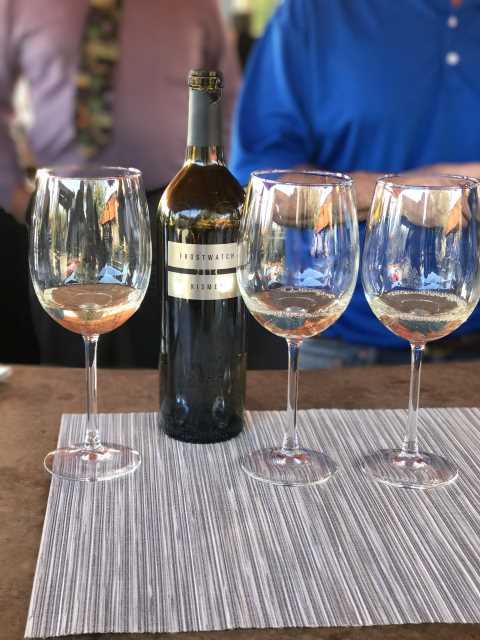
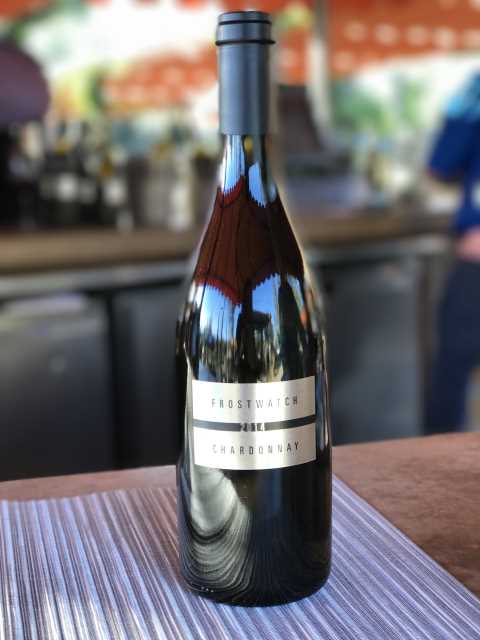
We can’t wait to share with you our list of fine wines and the genius’ behind the bottle. Take a peek at our last Tuesday Tasting with Brett Raven of Frost Watch Vineyard from the Bennett Valley. Frost Watch is a family owned and run winery that makes only 1500 cases of exclusive wines per year. They’ve been creating beautifully complex wines since 1997 and use grapes that are indigenous to the region which create a unique and bold flavor.
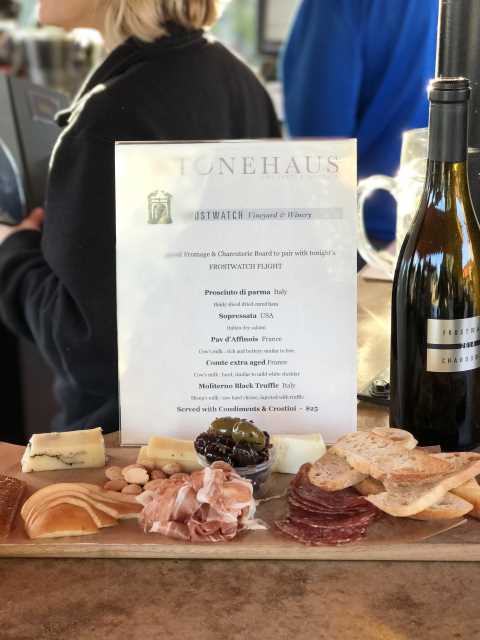
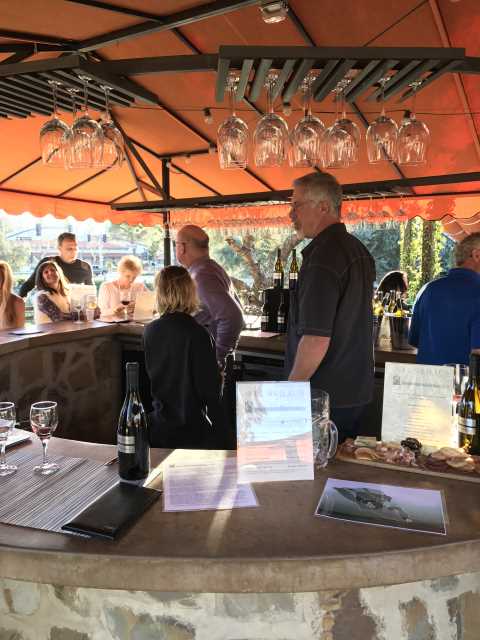
Save the date for our next Tuesday Tasting on Tuesday, April 4th with Tolosa Vineyard & Winery from Edna Valley. We can’t wait to share a glass with you. Cheers!”
Read MoreAs many in the neighborhood have heard the exciting news through the Westlake Village Inn grapevine, we have been in the process of developing plans for a tranquil spa, yoga, and salon experience. The idea is to enhance the overall experience at the Westlake Village Inn and create a unique, serene and restful stay filled with ETuscan inspiration and the beauty of the Tuscan countryside. The new spa will be located on the footprint that previously housed the tennis courts. It will include a yoga studio with a reflecting pond leading out to the lake, as well as 8 treatment rooms, a salon, 16 guest rooms and an adults-only lap pool. The spa will be open to the local community as well as guests of the Westlake Village Inn.
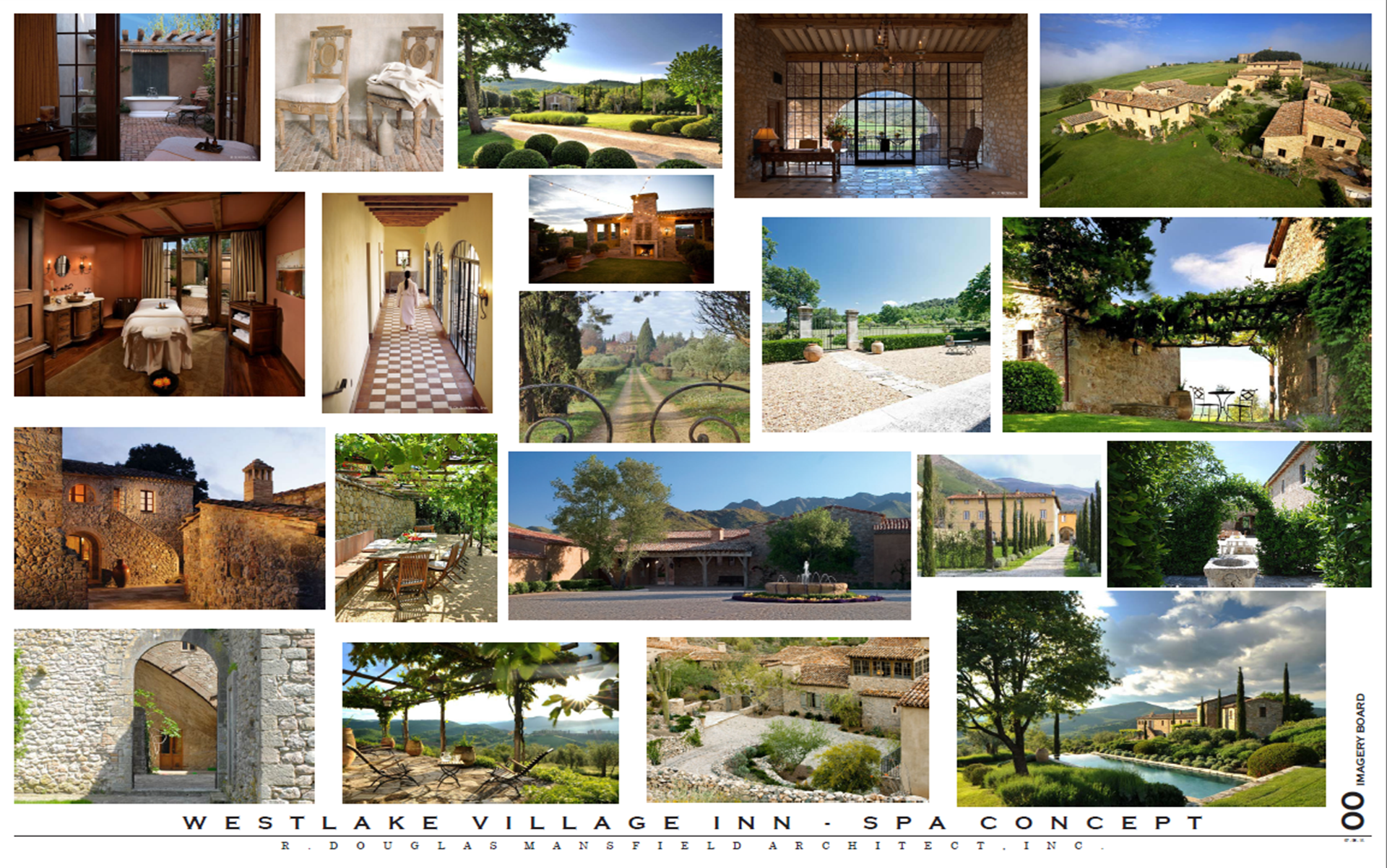
The Westlake Village City Council will consider our request at a public hearing (date TBD). “The Spa will be a beautiful, boutique-style facility and will provide a unique spa experience”, says Chris Cuilty, our Chief Operating & Financial Officer. “We’re excited about presenting this to the city. The addition will compliment what we’ve done on this property by upgrading the feel of the hotel and experience to the community. Our spa will be a place where you can rejuvenate your soul and escape from the world”
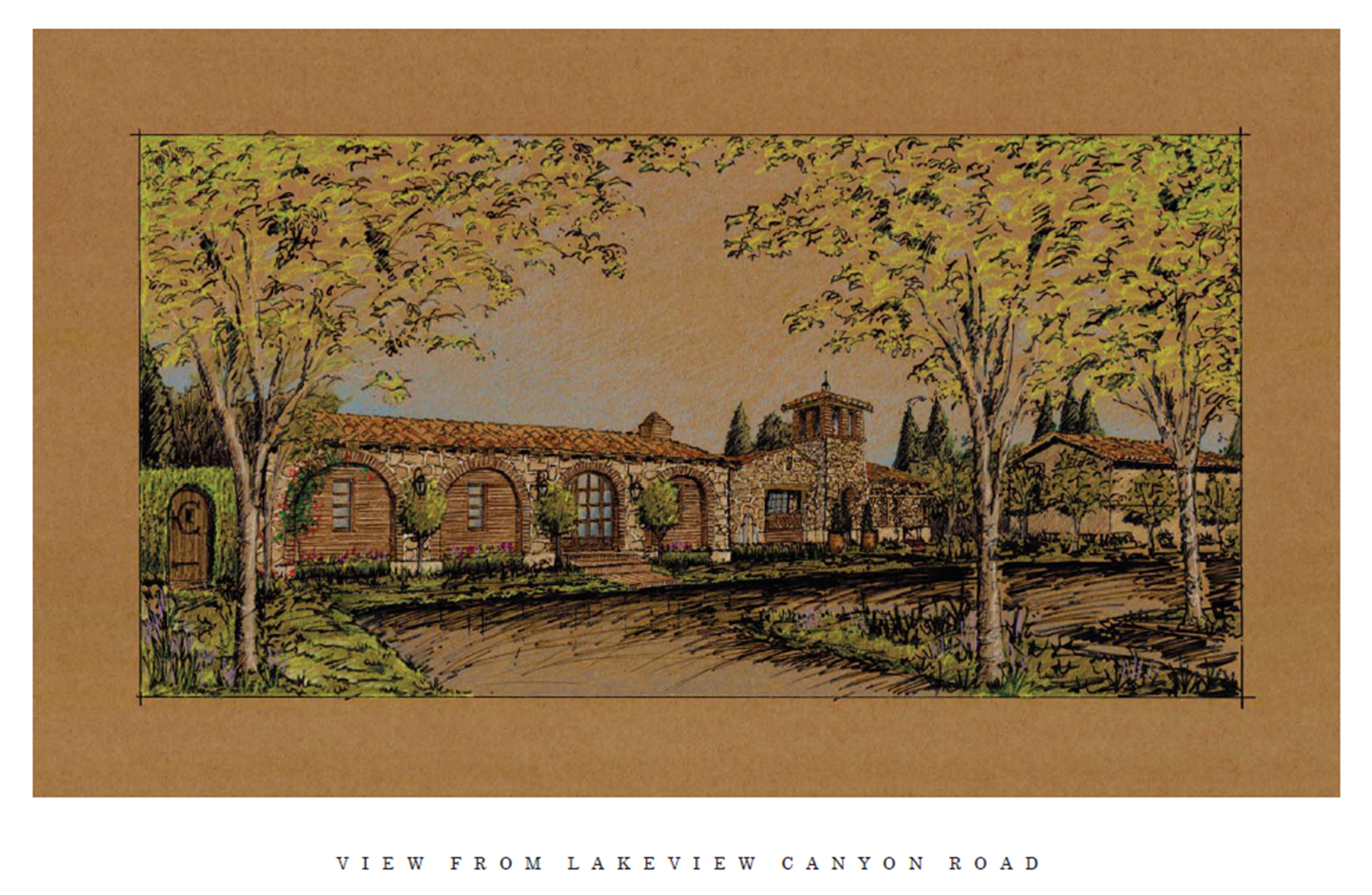
Our vision is to create a peaceful Tuscan-infused setting to compliment the offerings of the Westlake Village Inn, Stonehaus and Mediterraneo. The serene nature of the new spa, yoga studio, and salon will be a peaceful adult-friendly sanctuary for the entire community to enjoy.

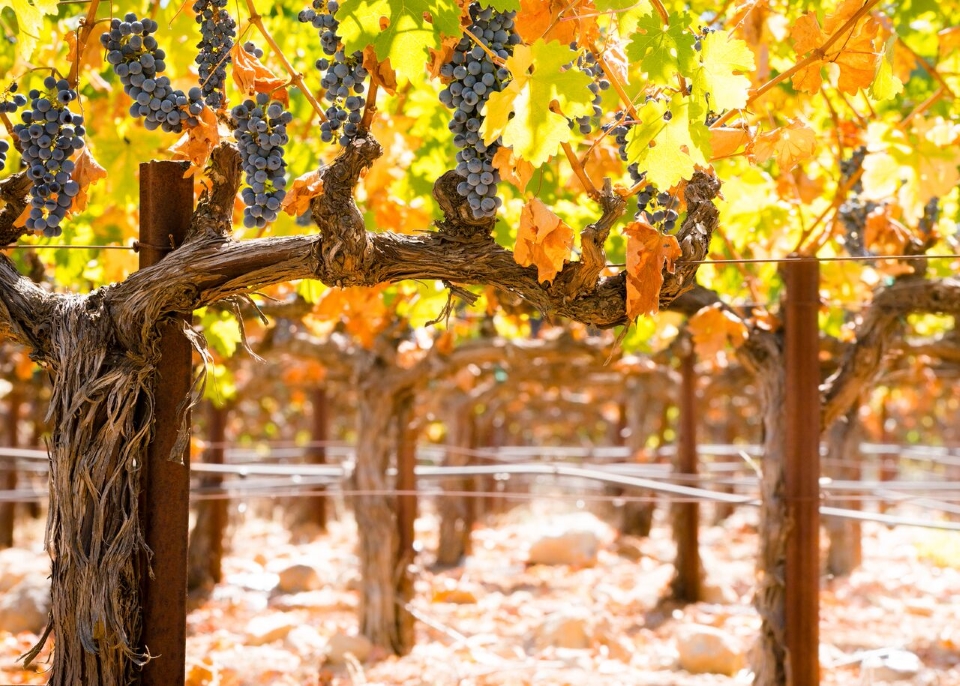
Fall is officially here at the Westlake Village Inn. The crisp morning air give us hope that our California Summer is coming to end and the season has officially changed. This month we celebrate with our annual Oktoberfest festivities at The Stonehaus. Experience a traditional German celebration October 14th – October 16th at The Stonehaus. Enjoy steins of authentic craft beer in our Beer Graden, fine German fare, live music and more as we ring in Fall.
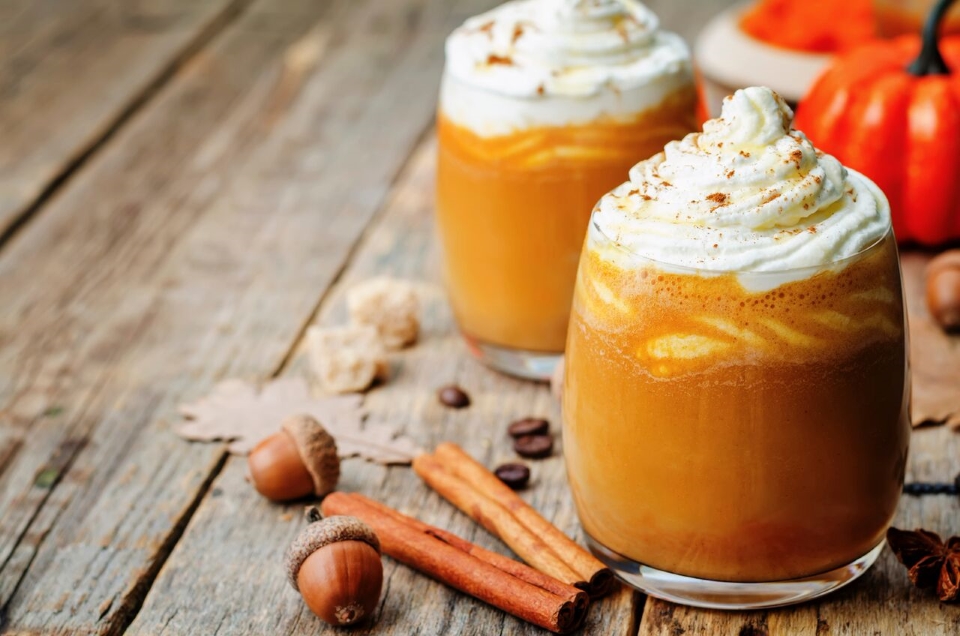
You’ll also notice Autumn favorites returning to the Stonehaus bakery including housemade pumpkin muffins and spiced pumpkin cookies. We also welcome back our traditional pumpkin spice latté that pairs perfectly with one of the cozy outdoor fireplaces and your morning breakfast.
Experience seasonal specials at Mediterraneo like Butternut Squash ravioli and Fall-inspired desserts from Chef Lisa Biondi and the other talented chefs in the kitchen.
There is nothing more special than a Fall staycation at the Inn where you can truly take in the splendor of the season. Explore our Fall Spa Specials or unwind with a relaxing yoga class in our Yoga Shala.
Stay tuned for more information on our annual Thanksgiving Feast and holiday celebrations at the property this November. Until then, Happy October.
Read More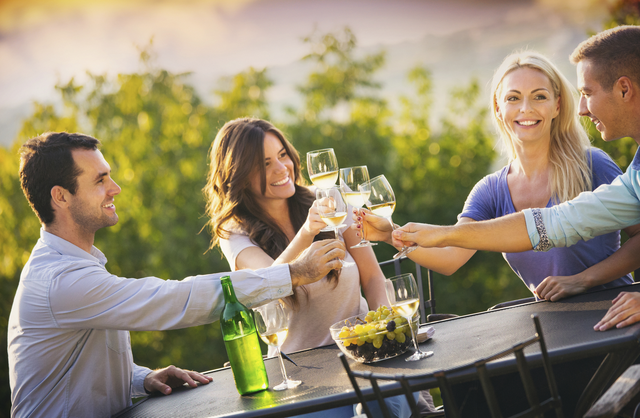
Fall is a turning point at The Westlake Village Inn. Although in California we often experience an Indian Summer where the heat doesn’t dissipate until Halloween comes near, even the leaves have fallen but the warm air lingers, we still anticipate the seasons changing.
We celebrate Fall with crisp, leafy garland, earthy-colored foliage, and pumpkins decorating the property. The Stonehaus vineyard leaves begin to change color and morph into a golden shade of brown and the grapes are succulent and ready to be picked. You’ll see the menu evolving at Mediterraneo with new seasonal specials as Chef experiments with root vegetables, pumpkins, squash, and warmer flavors. The Stonehaus will bring back Pumpkin Spiced Lattés and seasonal favorites that you can sip and enjoy in front of the cozy fireplaces.
Fall is a lovely time at The Westlake Village Inn Property. We’ll welcome the new season at the Stonehaus with the 2nd Annual Harvest Wine Dinner in the Vineyard on Saturday, September 24th to celebrate the culmination of the growing season. Enjoy a wine and hor d’oeuvre reception followed by four family-style courses of Fall inspired fare paired to the wines of Trefethen Family Vineyards of Napa Valley.
Learn more here: https://ticketbud.com/events/39aa4566-6401-11e6-893f-a3d0fa1362b9
There’s nothing more lovely than a Fall Staycation at the Westlake Village Inn. The kids are back in school and there is a calm lull before the holidays. Experience Fall spa specials at the The Spa and take in all the beauty the property has to offer.
Read More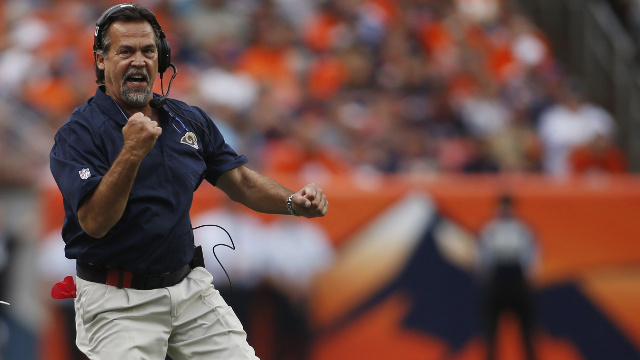
(Westlake Village, CA) – The Westlake Village Inn has announced a partnership with ESPNLA 710AM, which will broadcast a one-hour weekly radio show from Bogies Bar and Lounge, beginning Tuesday, September 13 and continuing for the duration of the 16-week NFL season. The show, featuring Los Angeles Rams head coach Jeff Fisher, and called The Jeff Fisher Show, will air live from Bogies each week from 6-7PM Pacific Time. The show is slated to feature special guests and will provide a breakdown of the Rams’ upcoming matchup and the latest team news. Each program (with the exception of the first broadcast, which will air on a Tuesday), will be broadcast live from Bogies on Monday nights.
Jeff Fisher, a West San Fernando Valley native, will bring his unique insight and local flavor to the broadcast. Westlake Village Inn COO/CFO Chris Cuilty said, “We’re all excited about the Rams returning to Los Angeles and are equally thrilled to host Jeff Fisher and ESPN here every week—we hope you’ll come out and join us for a great show, cocktails and our chef’s freshly-prepared menu items.”
The Westlake Village Inn is a 17-acre property in Westlake Village and is home to a 141-room resort, Mediterraneo Restaurant, Bogies Bar and Lounge and the Conejo Valley’s only working vineyard and winery, Stonehaus.
Read More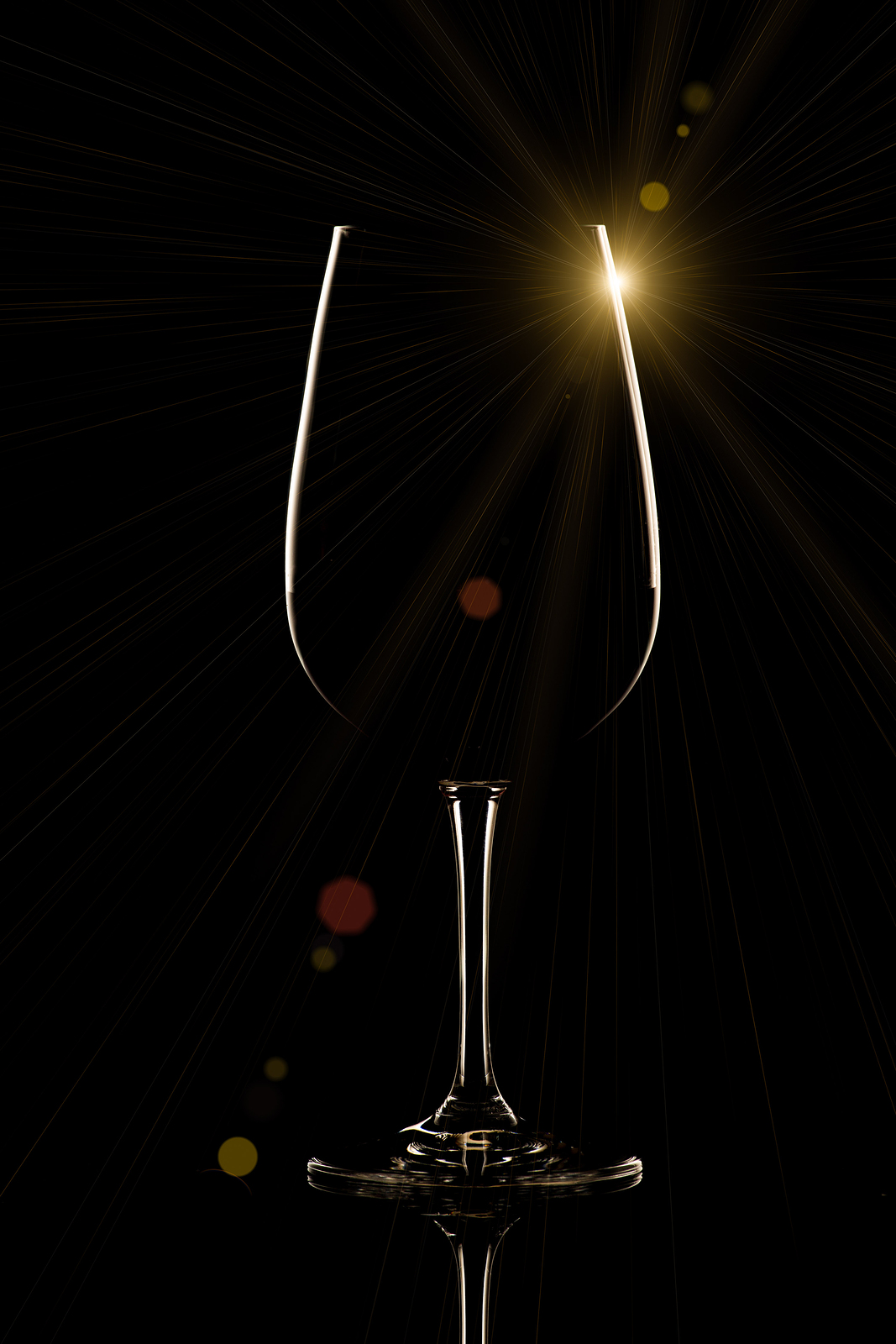
Each afternoon, as I sit with an array of bottles in from of me, tasting some of the best wines from around the world, people stare and often proceed to tell me that I must have the best job in the world. While that’s quite true, it is still just that, a job. Tasting wine, at least in a professional setting, can be hard work. And while we each have our own unique sensitivities and tolerances that can lend towards more natural abilities to taste certain characteristics of wine, for the most part, tasting wine is a learned skill that takes practice and requires much focus. I remember walking into class at 8am on my first day of studying wine professionally and seeing 12 glasses of 1oz wine pours on the desks and thinking both, “isn’t it a bit early?” and “this is going to be great!”. By lunch I had a bit of a headache and could have used a nap. Not because I’d been drinking all morning, every sip was swiftly spit out (at first by threat of expulsion, and then by sheer necessity), but because as I quickly learned, tasting wine is actually hard work. I was exhausted. For as much as I’d gone wine tasting and self studied over the near decade prior, I realized that I had very little idea as to how to really taste wine, and all that I was tasting when I did. Over the weeks that followed, each morning started out the same, arrive at 8am, taste 12 or so wines until noon, break for lunch, taste another 12 or so until 5pm, go home, study, repeat. Each day, for 8 hours a day, we studied wine and how to taste it. And as it turns out, there is much more to it than just swirl, sniff, sip & (sometimes) spit. There is in entire protocol, and if followed and practiced, it can reveal all of the wines subtle nuances and tell you its life story.
Being in California I assume everyone’s done their fare share of wine tasting. You’ve swirled and sniffed, and possibly even spit, but for many, you were just going through the motions, nodding and smiling as someone “more knowledgeable” than you goes on about notes of cigar box and bacon fat, while you think to yourself, “all I’m getting is red”. Or perhaps the power of suggestion is strong on you, all you need is for someone to mention peaches and honeysuckle and you’ll smell it too, but prior to the mention, all you smelled was white. Or maybe you actually know a lot about wine, possibly even more than you thought. Maybe years of trips to wine country and dinner parties have made you a bit of an expert. You know the very real struggle of finding a good Pinot Noir under $20 and have long since transitioned from Pinot Grigio to New Zealand Sauvignon Blanc and are now onto French Rosé in the summer. But if you joined the masses and have steered clear of Merlot for the past 10 years, you could be surprised at the challenge you might face while trying to decipher between it and a Chardonnay if you couldn’t actually see it’s color. A sensory analysis of wine breaks it down using sight, smell and taste, and can reveal everything about a wine from it’s grape varietal, to the region it’s from, to how old it is. But much of what we come to know about a wine during a tasting can be determined from its appearance alone. Beyond noting the obvious difference between red and white, you can narrow down varietals by intensity of color, climate by viscosity, and age by the rim. For example, just by looking, you’d likely be able to tell a Sauvignon Blanc from a Chardonnay, as you know the first to be a pale straw color and the latter to be more of a yellow/gold. Or take the reds, both Pinot Noir and Syrah can have prominent earth notes on both the nose and palate, but one glance noting their difference in color intensity could quickly guide us to the right conclusion. So what if we didn’t have the guidance of sight to rely on? We’d be left with just our nose and palate, and unless you’ve been practicing for 8 hours a day, this might be trickier that you’d think.
Join us in The Wine Cellar on February 13th as we take the blind tasting to the next level and challenge your wine tasting skills with a sensory analysis of five premium single varietal California wines served in black glasses, eliminating the guidance of sight. Each tasting pour will be paired with a small bite to enhance your tasting experience, and additional wine and food will be served when the tasting commences. Whether you’ve been married for 20 years, are planning a first date or are looking for a fun night out with friends, this fun twist on a the classic blind tasting will be a fabulous way to spend your Valentine’s Day weekend.
Read MoreAs lovely as the holidays are, getting through the holiday season is a lot of work, usually leaving us feeling depleted, and come mid-January, with a little case of the post-holiday blues. The twinkle lights are down and the streets are dark, the smell of fresh pine and apple pie has vanished, there are no more trips or visitors, no more parties, and no real reason to get dressed up and go out. And while there might be a small sense relief, it always feels to me like there is far too much winter ahead with too little excitement to look forward to. So on this 1st week of winter, even amongst the last minute holiday to-do list, I feel the need to plan little something to look forward to, to bring us all a little mid-winter comfort & cheer.
The Swiss figured out long ago that a simple yet decadent, leisurely meal based around cheese and wine with friends is the quickest way to warm the spirits. Raclette, from the French word Racler meaning “to scrape”, is both the name of the creamy Swiss cheese made from the milk of cows that graze upon Alpine pastures, and the name of the dish. Traditionally, a nourishing vegetarian meal believed to be created by Swiss shepherds nearly 700 years ago when they’d set up camp during their journey up the Alps and slowly melt the cheese over an open fire and scrape it onto boiled potatoes, pickles and bread.
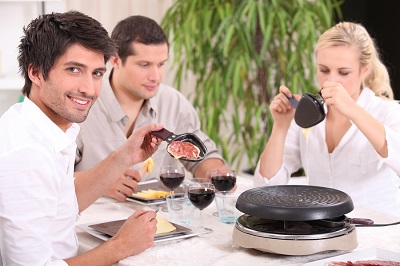
Today Raclette is not just a standard meal in Swiss & French ski lodges, it is enjoyed all over the world and includes meats and a variety of other vegetables, yet always maintains its tradition of being a casual, communal meal enjoyed slowly over hours, and of course, staying true to Swiss tradition, is never served with water, only hot tea, beer and wine. Nothing sounds more relaxing and enjoyable to me right now than sipping wine by the fire over a Raclette feast, especially one that I don’t have to cook and clean up after.
So in the spirit of relaxation and comfort, we invite you to cozy up by the fire and indulge in an Alpine-style cheese and wine dinner with us in The Vintage Room at Mediterraneo on Saturday, January 23, 2016. While we’re all resolving to do and be so much in the coming New Year, taking a moment for ourselves to truly relax and unwind after the craziness of the season ought to be on the top of our resolutions list.
Read MoreCreated by local winemakers roughly a century ago, they wanted a wine that they could drink immediately in celebration of the end of harvest, while the rest of the better Beaujolais was aging, and so Beaujolais Nouveau was born. Beaujolais Nouveau, meaning “New Beaujolais”, is the first wine released of the new vintage. Just 6-8 weeks after the grapes were hanging on the vines, pitchers of the fresh from barrel wine were shared all over the region, eventually making their way to Paris and beyond. Over the years, laws were put into place, release dates were changed and Beaujolais Nouveau Day was created. By French law, Beaujolais Nouveau is released at 12:01am, on the 3rd Thursday in November, regardless of the date of harvest, and the race to distribute the first wine of the season begins. What began in the southernmost part of Burgundy, in the Beaujolais region of France, Beaujolais Nouveau Day is now celebrated across all of France and around the world with festivals, parades, fireworks, live music, dancing and food. Roughly 1 million cases and 70 million bottles of Beaujolais Nouveau are consumed around the world at the same time every year.
Beaujolais Nouveau is made exclusively of the Gamay grape from France’s Beaujolais region, and like Champagne, must be hand harvested. Unlike more traditional fermentation methods, Beaujolais Nouveau goes through carbonic maceration, a quick method of fermentation where the berries are left whole for the juice inside each grape to ferment without contact with skins or stems, which enhances the grapes inherent fruit characteristics while eliminating tannins, resulting in a light, vibrant, fresh and fruity red wine that it is meant to drink immediately (by the following spring) and is best served chilled.
We at The Stonehaus will be celebrating Beaujolais Nouveau Day and the much anticipated arrival our Beaujolais Nouveau on Thursday, November 19th through Saturday, November 21st with live music, French fare, and of course, a glass of Beaujolais Nouveau!
Read MoreIn celebration of the culmination of the wine growing season and the harvest of a new vintage of wine, we are hosting our first annual Harvest Celebration Dinner in The Stonehaus Vineyard at 6pm on Saturday, September 19th featuring the wines of Zaca Mesa Winery.
Zaca Mesa is a local (Santa Barbara County), family owned winery that has been making hand crafted, estate grown and bottled wines, using traditional methods and sustainable practices since 1973. Located in the northern Santa Ynez Valley, just 25 miles inland of the Pacific Ocean, their vineyards enjoy morning fog and afternoon breezes ensuring the slow, consistent ripening of their grapes resulting in lush, high scoring wines. They specialize in Viognoir, Syrah and Rhone Blends, and just received 90 point scores on a number of the wines we’ll be enjoying!
Our Chef Joe Serna has created a fall inspired menu featuring local and seasonal ingredients carefully selected to pair with each wine. The evening will begin with a wine & hors d’oeuvre reception followed by a 4-course plated dinner under the stars, accompanied by live music and a Zaca Mesa Winery specialist, providing an ideal setting to savor the last of our warm summer nights.
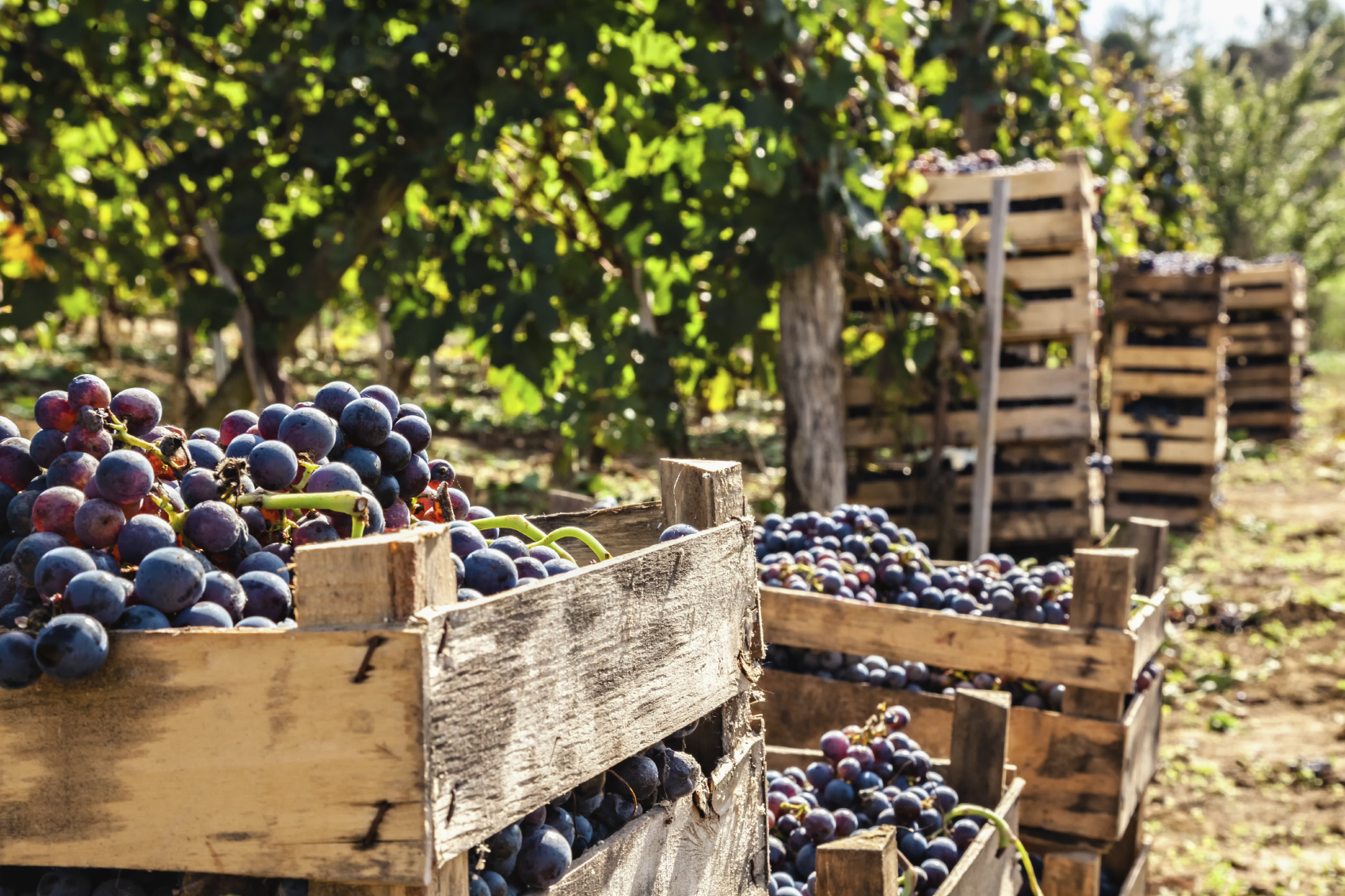
Tickets for this event can be purchased here: https://sint-32204.ticketbud.com/harvest-dinner-in-the-vineyard-with-zaca-mesa-wines
Tray Passed
Teff Pillow Crackers with sheep’s milk cheese and fresh herbs
~
Prosciutto and Citrus fried Olives
Zaca Mesa Viognier 2013
1st Course
Carrot, Beet and Persimmon Salad with Pomegranate Vinaigrette
Zaca Mesa Z Blanc 2012
2nd Course
Cassarecci Pasta with Quail Ragu and Parsley Bread Crumbs
Zaca Mesa Z Cuvee 2012
3rd Course
New York Steak Diane, Charred onion, Potato Fondant, Peppercorn, Bone Marrow Croquette
Zaca Mesa Reserve Syrah 2011
Dessert
Warm Gingerbread with mascarpone ice cream and pear butterscotch sauce
Zaca Mesa Z Three 2011
Read More